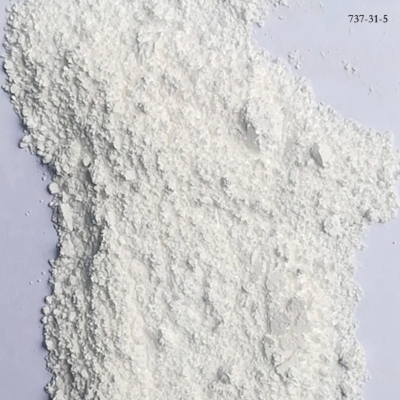-
Categories
-
Pharmaceutical Intermediates
-
Active Pharmaceutical Ingredients
-
Food Additives
- Industrial Coatings
- Agrochemicals
- Dyes and Pigments
- Surfactant
- Flavors and Fragrances
- Chemical Reagents
- Catalyst and Auxiliary
- Natural Products
- Inorganic Chemistry
-
Organic Chemistry
-
Biochemical Engineering
- Analytical Chemistry
-
Cosmetic Ingredient
- Water Treatment Chemical
-
Pharmaceutical Intermediates
Promotion
ECHEMI Mall
Wholesale
Weekly Price
Exhibition
News
-
Trade Service
Ref: Gong J, et alClin Chim Acta2018 Aug 10;486:214-218doi: 10.1016/j.cca.2018.08.011theaneurysmous cobweb subcavity hemorrhage (aSAH) is a common non-traumatic SAHAssessing the severity and prognosis of aSAH is often based on the World Federation of Neurosurgery (WFNS) and the Improved Fisher Grading ScaleInflammation participation occurs early after aSAH and promotes increased brain damageLeukhemete Interleukin-33 (IL-33) is a newly discovered member of the leukocyte interleukin-1 super familyIL-33 has a dual function, both as a traditional cytokine that activates its receptor complex and a cytocore factor for specific transcription regulationASAH after the rat brain tissue IL-33 expression increaseIncreased IL-33 expression is associated with inflammatory response to the central nervous systemThe serum IL-33 concentration increased in patients with acute cerebral infarction, and was positively correlated with the volume of infarctionJiangbiao Gong of the First Hospital of Zhejiang University School of Medicine analyzed the correlation between serum IL-33 concentration seroil-33 concentration and aSAH prognosis, published online in August 2018 in Clin Chim Actathe authors included 175 aSAH patients and 175 health controls for prospective observations from April 2013 to September 2016ASAH patient's intracranial aneurysm was diagnosed by CTA scan, admitted to hospital within 24 hours of bleeding, and open edion aneurysm clamped or intravascular interventional embolism within 48 hours of admissionExclude people who have undergone surgery, trauma or infection in the last month, history of internal bleeding and ischemic stroke, autoimmune diseases, use of antiplatelet or anticoagulants, post-hospital bleeding, pseudoanoma or associated uremia, cirrhosis, malignancy, chronic heart disease, chronic lung disease, diabetes and hypertension The serum IL-33 concentration was measured by enzyme-linked immunosorption, the severity of aSAH was assessed using the WFNS scale and the improved Fisher grading scale, and the GOS scale scored 1-3 for poor prognosis recruited healthy volunteers to the control group between September 2015 and September 2016, with a total of 175 cases, of which 80 were for men and 95 for women, aged 44-59, with a median age of 52 years Of the 175 cases in the aSAH group, 78 were for men and 97 for women; There were no significant differences in gender and age in the control group and aSAH group aSAH patients with a WFNS scale score of 2-3, median 3 points, and improved Fisher Grading scale score 1-3, median score of 2 points 45 (25.7%) post-traffic aneurysm, 23 (13.1%), cervical aneurysm, 38 (21.7%), 31 (17.7%) cerebral aneurysm, 24 (13.8%) cerebral aneurysm, 10 (5.7%) post-brain aneurysm and 4 cases (2.3%) vertebral aneurysm In 99 cases (56.6%) patients had an action vasculator clamped and the rest of the line of intravascular embolism In 41 cases (23.4%) of brain-outdoor drainage During the six months of follow-up, 28 (16.0%) deaths and 62 (35.4%) had poor prognosis The serum IL-33 concentration in patients in the aSAH group was significantly higher than in the control group With the increase of WFNS scale scoring, improved Fisher scale score, and serum c-reactive protein concentration, il-33 concentration increased significantly the results of the subjects' operating characteristics showed that serum IL-33 concentrations of 741.3ng/ml had good predictive power for prognosis (AUC- 0.831; 95% CI, 0.767-0.883), sensitivity 75.8% and specific79.6%; and WFNS scale score (AUC s) 0.874;95% CI, 0.815-0.919; P-0.189) and Improved Fisher Scale Score (AUC -0.845; 95% CI, 0.783-0.896; P-0.704) have a similar prognosis forecasting capability Further analysis found that combining serum IL-33 with WFNS scale score or improved Fisher scale score can significantly improve the prognostic performance of both, with ACU increasing to 0.907 (95% CI, 0.853-0.945; , the increase in serum IL-33 concentration is closely related to the severity of aSAH's inflammatory response and the patient's prognosis, suggesting that IL-33 is an inflammatory biomarker that evaluates aSAH severity and reflects prognosis (
Fu compiled, Liu Chenghong, of the First People's Hospital in Changshu City, Jiangsu Province, review, editor-in-chief of "Outside The Outside Information" and professor of at Huashan Hospital, affiliated with Fudan University,







